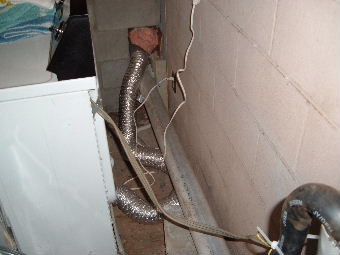
Why it fails: As it is called wastewater, there are also traces of fibers, dirt, and other debris that build up over time. This is what leads to potential clogging and other issues. What is it: Every time your washing machine sends its wastewater through the drain hose and into your drainage option, it is sending more than just water. If you discover that your drain hose has become damaged in any way, it’s best to replace it right away so that you can avoid other potential issues. Any pressure against it can result in irregular water flow and lead to backflow. You should make sure that your drain hose isn’t being pushed against by other appliances or objects.
#Washing machine drain pipe overflow how to
How to fix: Practicing proper maintenance and regular cleaning will help to ensure that your drain hose remains free of excess fibers and debris. Clogging is also a possibility that can lead to backflow.Ĭonversely, a damaged drain hose can cause you to see backflow and possible flooding issues in your washing machine or the laundry room.

Knots and kinks can result in poor water flow, resulting in backflow and flooding in your laundry room. Why it fails: There are a few reasons why your drain hose could fail. The drain hose connects from the back of the washing machine and rests via a curved elbow into a laundry tub or standpipe (a standpipe is also part of an outside pipe connection). What is it: Your washing machine’s drain hose is responsible for carrying wastewater from the unit to the standpipe, laundry tub, or outside pipe connection. Once the drain hose is free of blockage, you may reattach it to the back of the washing machine and rest the curved elbow back into the standpipe. Alternatively, you may use a stout piece of wire to fish through and attempt to knock loose and buildup. You can use a handheld drain auger to snake through the drain hose and break free from the congestion. If the airflow is weak, you’ll know that there’s an obstruction blocking your water flow. If you have an air compressor, shoot some air through the drain hose after it is removed. How to fix: If the clog is in the drain hose that connects to the back of your washing machine and rests in the standpipe, begin by removing the drain hose. When this happens, wastewater can return to the washing machine. If the standpipe is too high, your washing machine will have to work harder than usual to keep itself drained. If the standpipe is too low, overflow can occur, causing water to come back out of the standpipe.

Click here to use the chatbox to speak with one of our technicians.


 0 kommentar(er)
0 kommentar(er)
